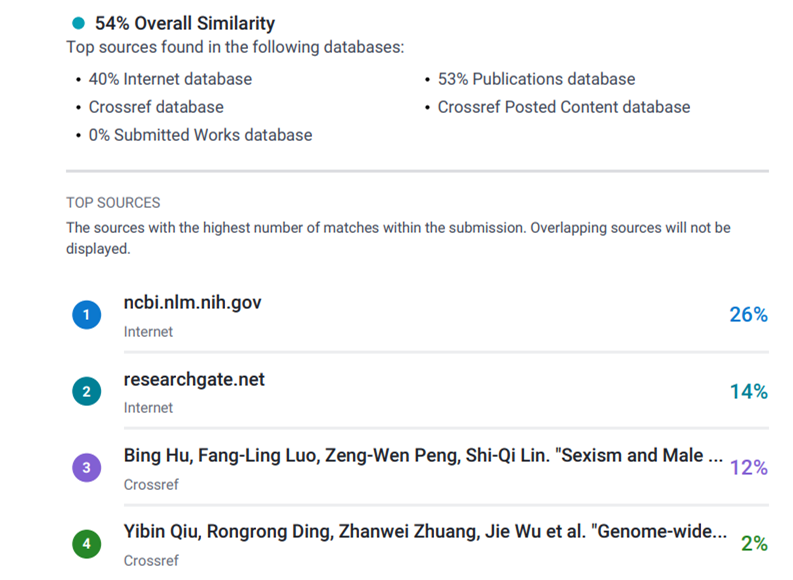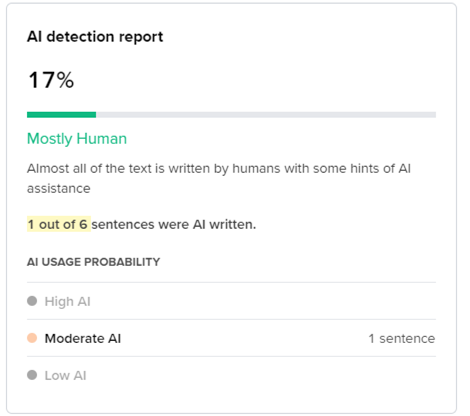In recent times, the academic community has found itself at the forefront of a pivotal shift. With ongoing discussions around academic integrity and plagiarism making headlines and the explosion of AI-generated content in scholarly publishing, we’re witnessing an era where technology’s impact on academia is both profound and multifaceted. These developments challenge us to reconsider the tools and methodologies we rely on to ensure the originality and credibility of our work.
In this context, the roles of plagiarism checkers and AI content detectors have become more critical than ever. As we delve into this topic, we’ll explore how these tools operate, their distinct purposes, and the unique challenges they face in a rapidly evolving technological landscape.
How Plagiarism Checking and AI Detection Software Work
Plagiarism checkers are tools designed to help identify instances where text has been copied without proper attribution. They work by comparing a document against a vast database of published works, including academic papers, books, and online resources. These tools employ algorithms to detect exact matches and paraphrased content, providing a report that highlights potential plagiarism and its sources. Industry-leading plagiarism checkers like Turnitin also identify efforts to throw off detection software, such as the use of hidden characters, character replacement, synonym substitution, and text-to-image conversion.

AI content detectors, on the other hand, are engineered to identify content generated by AI writing tools. These detectors analyze the text for patterns commonly associated with AI-generated content, including certain syntactical structures, coherence patterns, and specific phrases that might be less common in human-written text. AI content detectors rely on machine learning models that have been trained on a dataset of human-written and AI-generated texts to distinguish between the two.

While plagiarism checkers and AI detection tools serve distinct purposes, they share a common aspect in terms of how they’re meant to be approached: text identified as potentially plagiarized or AI-generated generally necessitates human review. This is because an automated flag does not definitively indicate intentional plagiarism or AI authorship, underscoring the importance of human oversight in verifying the academic integrity and authenticity of the content.
Differences Between Plagiarism Checkers and AI Detection Tools
The primary difference between plagiarism checkers and AI content detectors lies in their purpose. Plagiarism checkers aim to identify unoriginal content that has not been properly cited, focusing on the authenticity of the text. AI content detectors, conversely, seek to ascertain the origin of the content — whether it was created by a human or generated by an AI tool, regardless of the content’s originality or citation accuracy.
Challenges with AI Detection and Plagiarism Checks
Both technologies face their unique challenges. Plagiarism checkers sometimes struggle with false positives, where common knowledge or coincidentally similar phrases are flagged as plagiarism. They may also miss cleverly paraphrased content that, while technically original, lacks proper attribution or intellectual honesty.
AI content detectors grapple with the rapid advancement of AI technologies. As AI writing tools become more sophisticated, detecting AI-generated content becomes increasingly difficult. These detectors must continually evolve, improving their algorithms to keep pace with rapid AI advancements, which can be a resource-intensive process.
AI-generated content can sometimes be flagged by plagiarism checkers, especially if the AI tool has inadvertently produced text that closely matches existing material in the database. Additionally, because AI can synthesize information from a vast range of sources, there’s a risk of generating content that, while not directly plagiarized, mirrors the structure or ideas of copyrighted materials closely enough to raise concerns.1
Guidelines for Responsible AI Use and Avoiding Accidental Plagiarism
In this transformative era of digital scholarship, it’s imperative that we, as academics and PhD students, adhere to guidelines that not only promote the responsible use of AI in our research but also help us steer clear of accidental plagiarism. Here’s a comprehensive approach to achieving both these goals.
Responsible AI Use in Academia
Transparency is Key: Always disclose the involvement of AI tools in your research process. Whether it’s generating data, drafting sections of a paper, or analyzing results, clarity about AI’s role enhances the credibility of your work.
AI as an Assistant, not a Replacement: Leverage AI for its strengths, such as data analysis and generating initial drafts, but remember that the critical thinking and scholarly insight must be distinctly human. Ensure that AI-generated content is rigorously reviewed and refined by you.
Stay Ethically Informed: Keep abreast of the ethical considerations surrounding AI use, including the potential for inheriting biases from AI models. Your engagement with AI should reflect a commitment to fairness and integrity.
Institutional Guidelines Matter: Adhere to your institution’s policies on AI use in academic work. These guidelines are designed to preserve academic integrity and should be considered the minimum standard for your research practices.
Avoiding Accidental Plagiarism
Understand What Constitutes Plagiarism: Familiarize yourself with the various forms of plagiarism: verbatim copying, paraphrasing without credit, mosaic (or patchwork) plagiarism, and self-plagiarism. Recognizing these forms will help you understand why you need a plagiarism checker even when you think you don’t.
Cite Meticulously: When in doubt, cite.2 Ensuring that all sources are properly credited is fundamental to scholarly work. This includes data, ideas, and text generated or inspired by AI tools.
Use Plagiarism Checkers Wisely: Employ trusted plagiarism checks like Paperpal’s as a part of your drafting process to identify and correct potential issues of uncredited use before final submission.
Paraphrase Properly: When using others’ ideas, paraphrase effectively—this means significantly rewording the original text and citing the source. It’s not just about changing a few words but about restating the concept in your own voice and citing correctly.
Seek Feedback: Before finalizing your work, have it reviewed by peers or mentors. A fresh set of eyes can catch unintentional similarities to existing work that you might have missed.
As AI continues to transform the academic landscape, the distinction between plagiarism checkers and AI content detectors becomes increasingly significant. Academics and PhD students must understand the capabilities and limitations of these technologies, navigating their use with integrity and responsibility. By adhering to ethical guidelines and embracing transparency, the academic community can harness the power of AI while upholding the highest standards of academic integrity.
References
1. The Times Sues OpenAI and Microsoft Over A.I. Use of Copyrighted Work. (Accessed: February 15, 2024) https://www.nytimes.com/2023/12/27/business/media/new-york-times-open-ai-microsoft-lawsuit.html
2. When to Cite. (Accessed: February 15, 2024) https://www.bu.edu/sph/students/student-services/student-resources/academic-support/communication-resources/when-to-cite/
Paperpal is a comprehensive AI writing toolkit that helps students and researchers achieve 2x the writing in half the time. It leverages 23+ years of STM experience and insights from millions of research articles to provide in-depth academic writing, language editing, and submission readiness support to help you write better, faster. Get accurate academic translations, rewriting support, grammar checks, vocabulary suggestions, and generative AI assistance that delivers human precision at machine speed. Try for free or upgrade to Paperpal Prime to access premium features, including consistency, plagiarism, and 30+ submission readiness checks to help you succeed. Experience the future of academic writing – Sign up to Paperpal and start writing for free!





